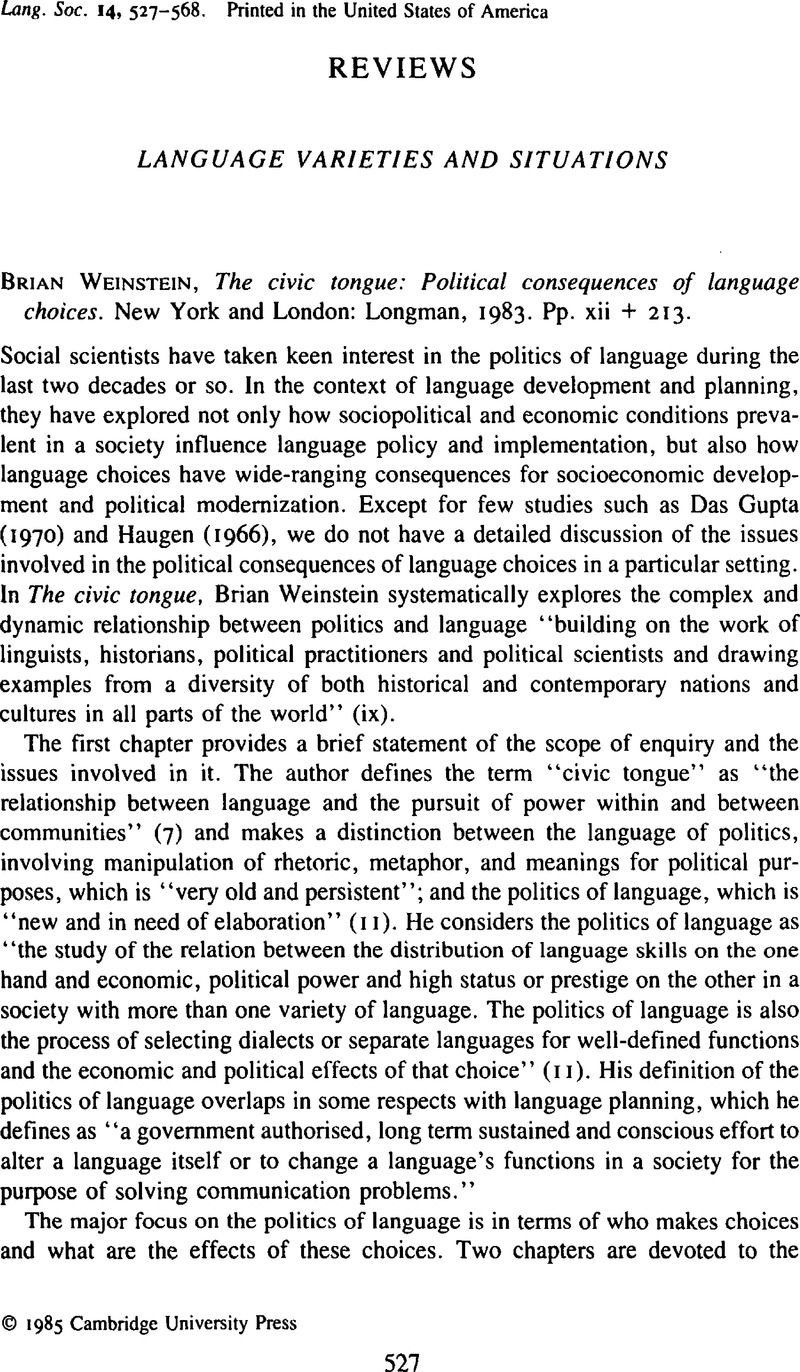Das, Gupta J. (
1973). Language planning and public policy: Analytical outline of the policy process related to language planning in India. In
Shuy, R. (ed.),
The Twenty-Third Annual Round Table Meeting on Linguistics and Language Studies.
Washington, D.C.,
Georgetown University Press.
Google Scholar 